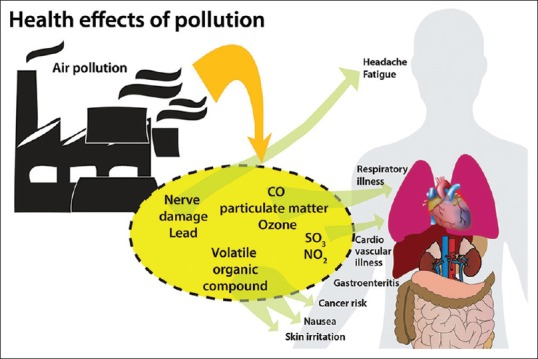Brief Summary
Indoor air quality (IAQ) often goes overlooked as a pillar for health. The health effects of poor IAQ can be noticed immediately or materialize over a longer period of time. Household air pollution was responsible for an estimated 3.2 million deaths per year in 2020, including over 237K deaths of children under the age of 5 (source). The bottom line – utilize an air purifier in your living environment.
This article will serve as a comprehensive guide on air quality, how to filter your air, the benefits, along with best practices. We’ll also cover some portable air purifier(s) to consider.
Key Points
Air purifier benefits include improved indoor air quality, elimination of household pollutants (think dust mites, pet dander, etc.), improved sleep/recovery, improved overall respiratory health, and potentially improved allergy symptoms.
Air purification can begin with the HVAC system using a MERV filter that is high enough to trap most particles but efficient for the specific HVAC system. Additional HEPA air purifiers can be leveraged throughout home for a larger improvement of air quality.
Clean air = health.
Air Quality Introduction
There are many indoor air pollutants that can create issues or wreak havoc on individuals and families. We are going to cover the basics of indoor air quality and why filtering your air is a worthwhile investment. We’ll cover air purifier benefits along with types of air purifiers with a focus on portable air purifiers.
Frankly – we ignored this aspect of health for a while, figured we covered the basics; followed a workout program, ate healthy (avoided seed oils and followed a clean/nutrient-dense diet), prioritized sleep, got our 10K steps in, etc. – but once we did a deep dive on air quality, we realized we needed to broaden our scope of total health.
Air quality is important for your health and we’ll walk through some steps to improve air quality in your living environment.
Types of Indoor Air Pollutants –

There are many sources of indoor air pollution, below is a comprehensive list. Also feel free to visit the Environmental Protection Agency (EPA) site that outlines types of indoor pollutants (source):
Fuel-burning combustion appliances
Tobacco smoke particles
Building materials and furnishings as diverse as:
Deteriorated asbestos-containing insulation
Newly installed flooring, upholstery, or carpet
Cabinetry or furniture made of certain pressed wood products
Products for household cleaning and maintenance, personal care, or hobbies
Central heating and cooling systems and humidification devices
Dust particles & dust mites
Excess moisture
Pet dander
Mold spores
Outdoor sources such as:
Radon
Pesticides
Outdoor air pollution.
The gist of it is that sources of pollutants are anything that emit gas or particles into the air. Proper ventilation is usually helpful in improving air quality. can even make matters worse (if outdoor air has airborne pollutants) – oftentimes HVAC systems don’t bring in enough outdoor air to dilute the indoor pollutant source or removing it.
Additionally you can find more information on specific pollutants and sources of indoor air pollution on the Environmental Protection Agency site.
Why You Should Filter the Indoor Air in Your Living Environment –

Indoor Air Quality (IAQ) can have an immense effect on one’s health. These effects could be immediately noticeable or symptoms could emerge over time. The problem is a lot of the pollutants are hard to identify or the air quality isn’t perceived as the culprit of the symptom.
Poor air quality inside could trigger allergies. Also – the symptoms or effects of an indoor air pollutant depends on the person as well – factors like age, respiratory health, physical fitness level, etc. all play a part.
Air Purifier Benefits
Below we’ll talk through the high level benefits of air purifiers. Its important to note – the benefits could range widely for the individual, and for awhile it may even go unnoticed. Better IAQ could mean better focus at work, improved sleep quality, improved recovery, less allergy symptoms, less sickness or infections, etc.
Eliminates Harmful Chemicals from Indoor Environments
Air purifiers can reduce exposure to harmful pollutants that come from cleaning products, furniture, and carpets. All of these can emit volatile organic compounds or VOCs. Air purifiers can eliminate many of the VOCs found in the air.
Closed doors in the home doesn’t mean we can eliminate external contaminants. These chemicals can occur frequently within areas of high automobile traffic and enter the house of an owner. Researchers have found that exposure to carbon monoxide and nitrogen dioxide can cause cognitive decline and Alzheimer’s.
Air purifiers are important in the removal of volatile organic compounds from the air.
Improves respiratory health –
Air purifiers can assist with eliminating particles that can affect those with respiratory symptoms such as asthma or allergies and also reduces likelihood of developing respiratory issues. They can also eliminate dust mites, pet dander, and mold spores.
Immediate or Short-term Effects –
Pollutant exposure can materialize in form of a headache, light-headedness, faintness, sinus discomfort/runny nose, irritation of eyes/ears/nose/throat, and/or fatigue.
Some of these could be perceived as a cold or virus but is a result of poor indoor air.
Long term effects –
here is where it gets bleak – long term exposure to poor air quality can materialize in the form of cancer, heart disease, respiratory disease – it goes without saying these can be fatal. Paying attention now?
Using an air purifier can also help alleviate Asthma symptoms. By purifying the air they can potentially lower the changes of an asthma attacks for those who suffer from the condition.
Reduces the Chances of Airborne Diseases
Reduces spread of airborne illness – probably notice air purifiers became popular in COVID times – makes sense, air purifiers can reduce spread of airborne illnesses in the living environment.
Airborne illnesses like colds and flus are spread by circulating small bacterial pathogens. In the event of an individual who caught the flu, the entire household usually becomes ill. Within the household all people breathe the same air that is contaminated with the bacteria or viruses. Air purifiers can capture the contaminant, in this case bacteria or viruses and eliminate them from circulation.
Air purifiers can eradicate the cause of a respiratory infection by eliminating from airborne circulation within the household – thus potentially preserving some family members health!
An additional note – those who suffer a chronic respiratory problem need air purification devices, as they typically have weakened immune systems.
Neutralizes Unpleasant Odors
Air purifiers can assist in eliminating odors throughout the indoor environment, contributing to fresh air and odorless households.
Eliminate & Trap Particles
Oftentimes air purifiers can trap particles like pet hair and pet dander that could trigger allergies. Usually the pre-filter of some air purifiers can trap many particles that can effect the air quality inside. Additionally as we’ve mentioned before – air purifiers can trap mold spores, dust mites, and pet dander removing them from circulation.
Types of Air Filters & Ways to Filter Your Air –
Below we’ll list out the types of air purifiers with a brief description. There are many types of air purifiers and oftentimes air purifiers combine the technology to filter the air –
HEPA filters
UV light air purifiers
Electrostatic filters
Washable filters
Media filters
Spun Glass filters
Pleated filters
Activated Carbon filter
Air Purifier Metrics
Here are the air purifier metrics to consider when selecting a portable filter for your home –
MERV Rating
CADR – Clean Air Delivery Rate
HEPA? Yes or No
Square Footage and Air Exchange Rate
MERV –
Let’s quickly touch on MERV rating – Minimum Efficiency Reporting Values reports a filter’s ability to capture or trap pollutants that are as small as .3 microns and as large as 10. The scale is 1-16. This scale will tell you how effective your air filter is. For the folks that want to take a deep dive on MERV – here is our detailed write up (internal link).
CADR –
Clean air delivery rate is measurement that indicates how much air an air-filtration system can filter and deliver per minute.
HEPA –
Cross comparing w/ EPA’s MERV rating – it appears HEPA is the best at eliminating indoor air pollutants. Here we can state with certainty that a HEPA air purifier when deploying into the living environment. From the EPA’s site – HEPA is a type of pleated mechanical air filter. It is an acronym for “high efficiency particulate air [filter]” (as officially defined by the U.S. Dept. of Energy). This type of air filter can theoretically remove at least 99.97% of dust, pollen, mold, bacteria, and any airborne particles with a size of 0.3 microns (µm) (link).
The EPA has a lot of data on IAQ however many of the studies are outdated. Let’s assume that our best bet is to grab a HEPA air filter. What’s the best play? HEPA filters offer us a few different options – purifiers, air filters, portable air cleans/filters, and filters for your entire HVAC systems.
Square Footage Another factor to think through is your air exchange rate.
True HEPA filter vs HEPA filter (side note) –
A True HEPA filters are the only type of HEPA filter that truly conforms to the DOE standard for HEPA filtration, has the highest efficiency, and hits the 99.97% threshold.
Getting Started –
First step is if you are in a house and have control over the HVAC system to install the highest MERV rating HVAC filters that your system allows for without degrading its performance. Once the HVAC system is cared for, we can focus on portable air filters. There are many on the market – we’ll suggest a few based on personal experience/implementation and reviews.
Next up – bedrooms, assuming most of the time spent in your household is in your bedroom. So spend some time focusing on those areas first/foremost. Filtering the air in your bedroom can offer some significant benefits and improve sleep.
Air Purifiers to Consider
Finding a good air purifier is not an easy task. There are many air purifiers on the market and the choices are seemingly endless. (internal link to ranking article?)
Below are some HEPA Filter models to take a look at – generally HEPA air filters are the best. These are the best we sorted through. You can take a bunch of time watching YT videos and/or comparisons, but at end of day we think grabbing a HEPA filter for your square footage needs at one from one of these manufacturers below is your best bet. Prices generally are the same and scale up depending on square footage requirements.
Levoit – https://levoit.com/
MedifyAir – https://medifyair.com/
Blueair – https://www.blueair.com/us/
Coway – https://cowaymega.com/
Honeywell – https://www.honeywellstore.com/store/category/air-purifiers.htm
Winix – https://www.winixamerica.com/product-category/air-purifiers/
BlueAir – https://www.blueair.com/us/
Big Picture –
Indoor air quality is a non-negotiable pillar of health – yet often overlooked. Air quality can affect many aspects of our daily lives – it’s important to work towards improving it. For those in smaller living spaces, this can simply be purchasing a portable filter that covers most of your living area. For ones with a larger living environment – it may take some nuance (selecting best MERV filter for HVAC) and a plan (places to put portable HEPA purifiers).
Now the worst part is – even the EPA states that pollutants in indoor air and their effects still have a ton of uncertainty, and more research is needed to drill down on the specifics to determine what concentrations or time exposure determine a diagnosis or specific health problem. The solution? Filter your air now and get clarity later.
The goal is to obtain better air quality in your living environment. Focus on the air in your home, don’t overlook this aspect of your health, and improve your indoor air quality today!


Comment 1
Reply to comment one
New Comment from admin
New comment from stranger